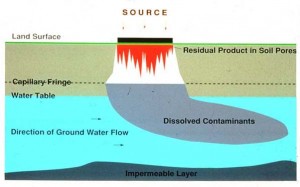Step 3: Starting to Feel the Difference…
Limiting the number of laundry loads that I’ve done has been tough. In this warmer weather, I’ve gone running more often and spent more time outside, where my clothing becomes dirtier. I’ve gone through clothing more frequently and my hamper has piled up. I was running low on clothing throughout the week, but I still waited until Friday (my designated once a week laundry day under my new sustainable plan) to run the machines.
When I did decide to do laundry on Friday, my entire laundry contents barely fit into the machine. Perhaps I should wash bulkier items (like my towels) less frequently than every week. Perhaps I should just use one towel in a given week instead of two or even three. The overcrowding of the washing machine certainly affected the quality of the wash. Pants were more wrinkled and the fuzz from the towels got onto other clothing. There are no serious implications of this, as the “damage” is barely noticable. However, if this pattern continues, nicer clothing could become more worn down from these crowded laundry loads in terrible laundry machines.
The temperature change of the laundry machines has affected the quality of my laundry as well. With whites, which are dirtier, I used to wash with hot water (or at least a hot wash and a cold rinse). Under this new eco-friendly plan, I have been using exclusively cold water for the wash. This helps reduce electricity consumption, especially if more and more students on campus run their machines on a cold cycle.
While energy consumption may decrease up to 50% by switching water temperature, cold wash cycles can have negative environmental effects as well. Because cold water weighs more than warm water, drying cycles often take longer and require much more energy when the clothing was washed with cold water, compared to when the clothing is washed with warm water. Moreover, cold water may require using more detergent in the wash. Cold water also removes the chemicals less efficiently than warm water does. I tend to put a lot of detergent in the machine, and I put even more in the machine this week when the machines was densely packed. The detergent was filled significantly passed the #2 line, nearing the #3 line. Chemicals found in laundry detergent are processed through the clothing and into the water which is drained out of the machines into sewage systems, eventually being processed and returned to the Delaware River. While I doubt that the amount of detergent I use has a significant impact on the ecosystems of the Delaware River, there is a problem of pollutants from cleaning supplies affecting watershed areas, as well as emitting carbon into the atmosphere. The use of detergent by an average family (300 loads per year) emits approximately 480 pounds of carbon into the atmosphere.
I think I am doing a great job so far in following through with my plan, but the inconvenience factor may soon start to bother me. I obviously would rather wash my clothing the way I used to, but for sustainability purposes I will try to get used to this new plan.

http://www.washwise.org.au/Laundry_You_And_The_Environment/Laundry_Detergent_Ingredients/Ingredients_And_The_Environment.htm
http://econutssoap.com/laundry-science-101-hot-water-vs-cold-water/
Leave a Reply